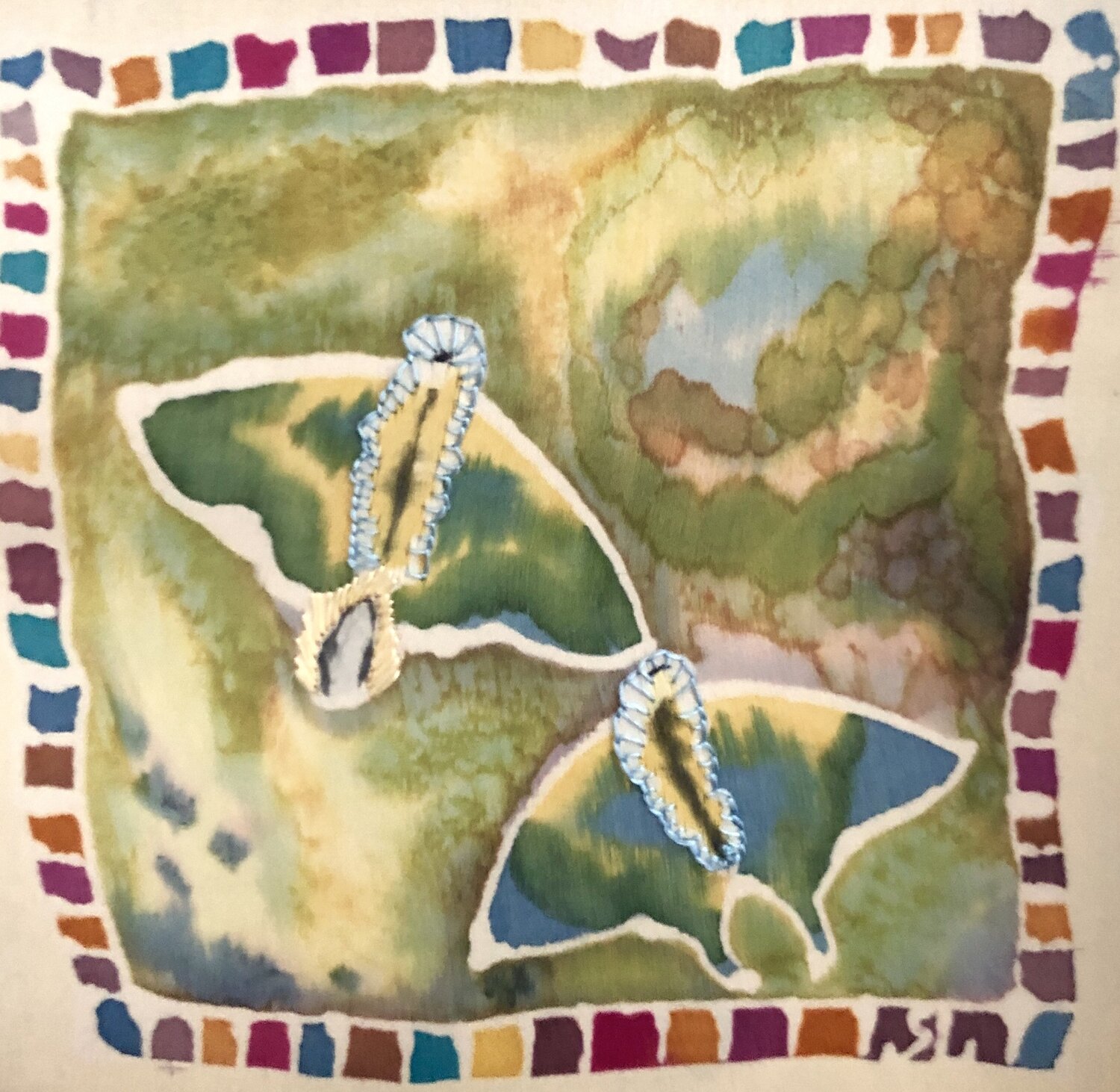Techniques and Concepts Defined
Eco-Printing
A printing technique using steam to mark fabric or paper with plants, leaves, and flowers.
Furoshiki
The Japanese art of using cloth to wrap a gift.
Ikat
Perfected by Okinawan weavers, dyeing fiber using resist (warp, weft, or both) before it is woven into a fabric.
Imaginal Realm
The imaginal realm is a way of intuiting those images that shape one’s thinking and story. As stated by William Redfield, “The imaginal is the realm that lies between the visible realms of material life and the indivisible realms beyond.”
https://www.williamredfield.com/practice/receiving-from-the-imaginal?format=amp 12/11/20
Kantha
A traditional Bangladeshi form of hand stitching layers of recycled sari silk.
Kasuri
A Japanese term for fabric woven by dyeing either the warp or the weft, and is a form of ikat.
Kintsugi
The Japanese art of mending broken ceramics by knitting the cracks with gold. As a practice, kintsugi enables one to see what might be considered to be imperfect as beautiful.
Nunofelting
A felting technique, binding natural fibers (wool, silk, bamboo, etc.) with silk to create a lightweight textile. Nuno is a Japanese word meaning cloth.
Pojagi
Traditional Korean hand-sewn seams creating airy patchwork panels.
Rozome
A Japanese technique to dye fabric using wax resist.
Sashiko
A traditional form of Japanese hand stitching.
Shibori
A Japanese technique to manually create resist patterns in fabric. Before dyeing, fabric is folded, stitched, or woven to create patterns throughout the yardage.
Surface Design
From the Surface Design Association: “Surface Design encompasses the coloring, patterning, and structuring of fiber and fabric. This involves creative exploration of processes such as dyeing, painting, printing, stitching, embellishing, quilting, weaving, knitting, felting, and papermaking.”
